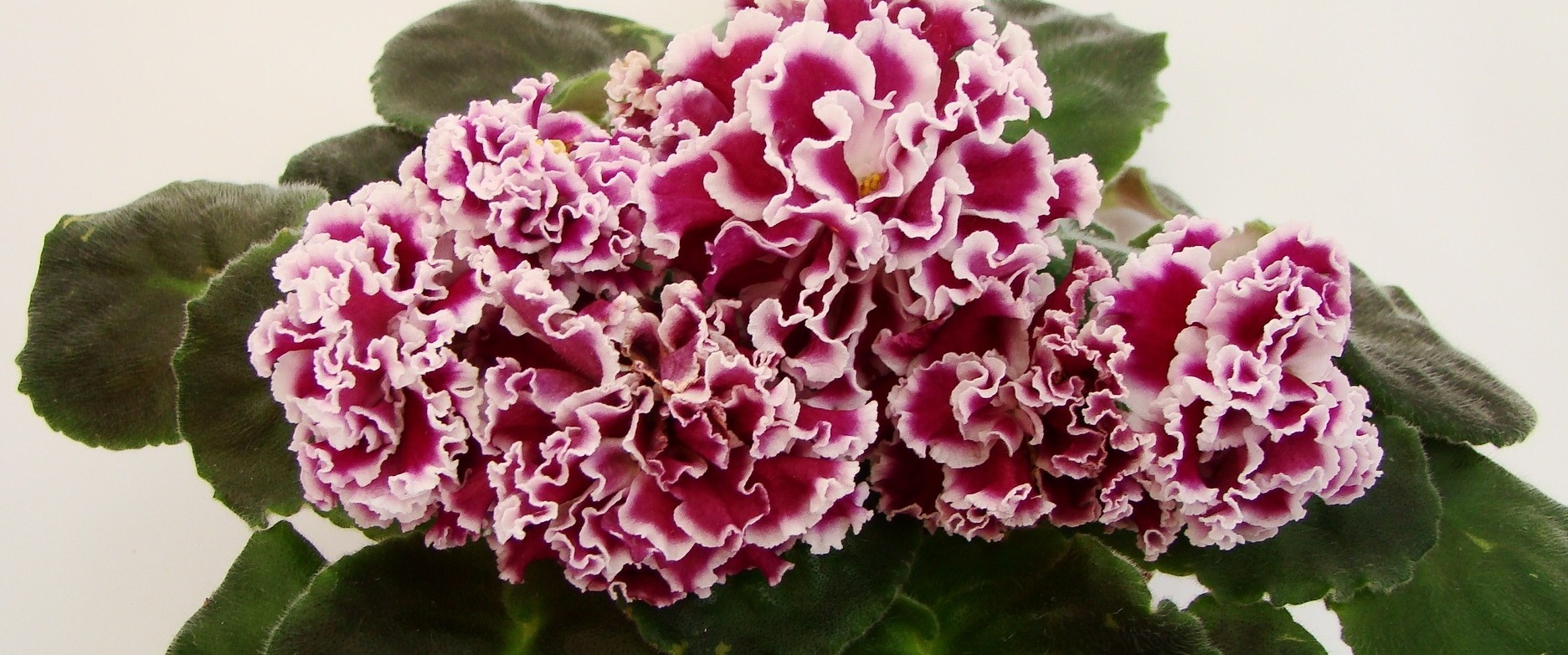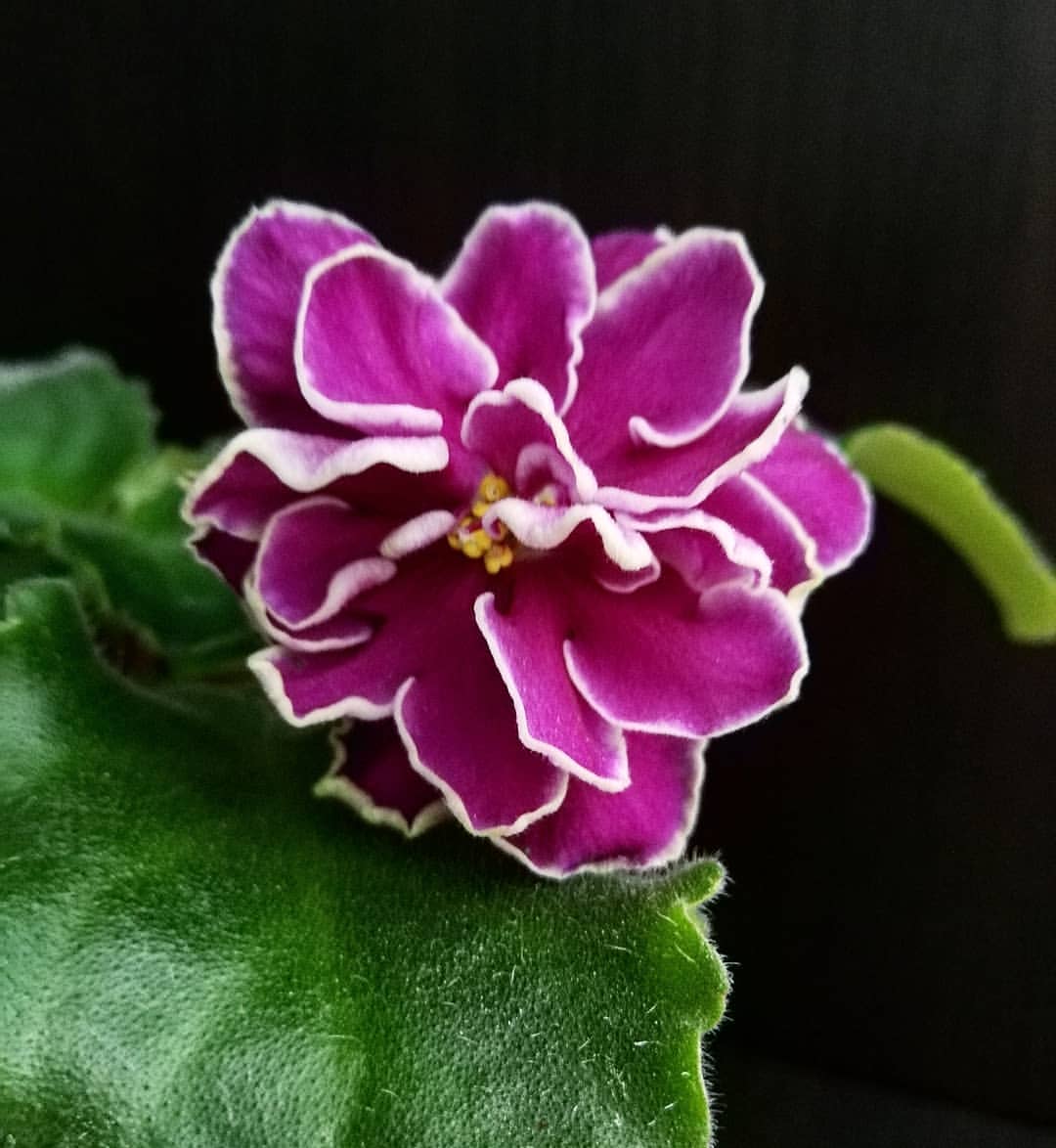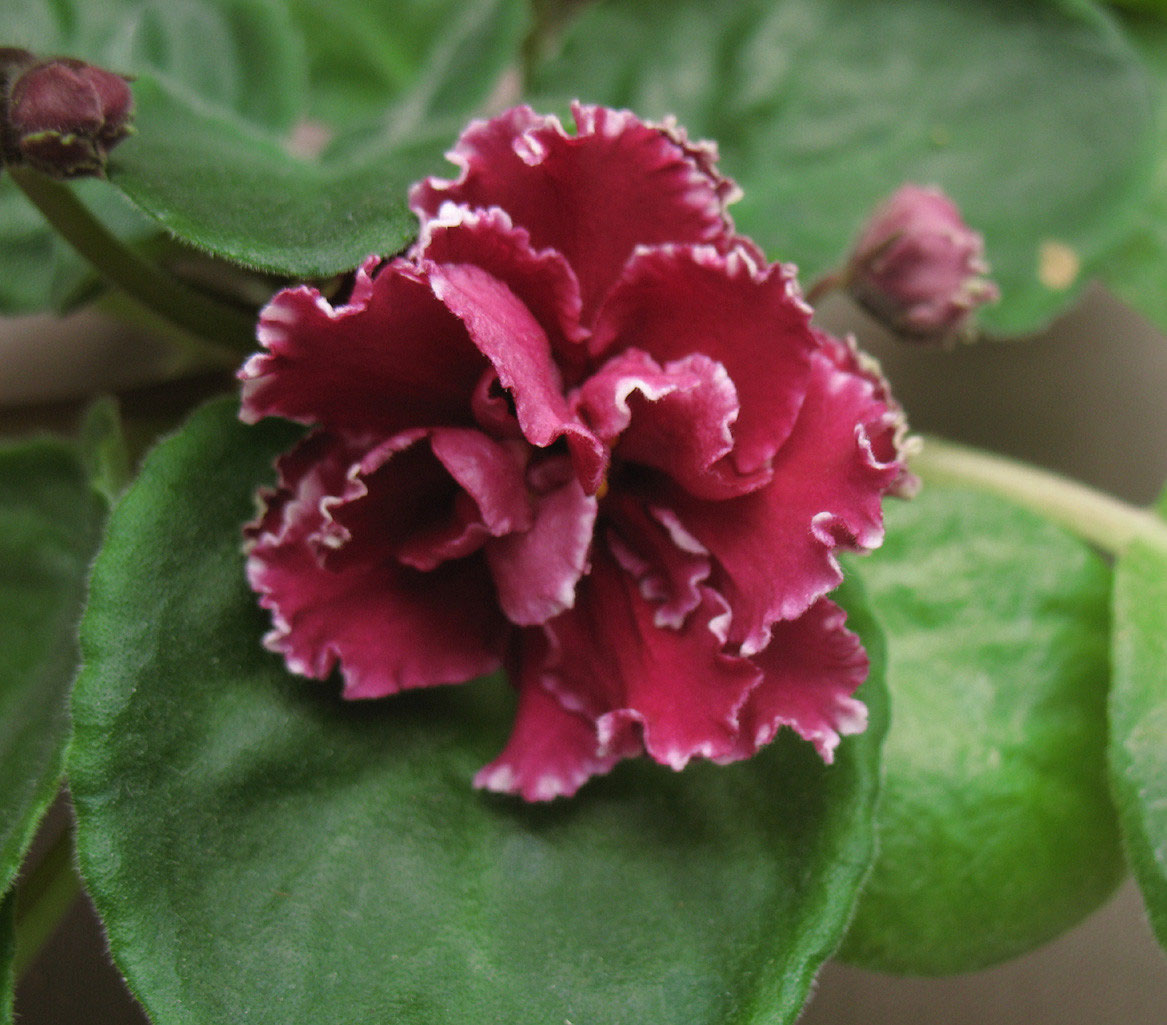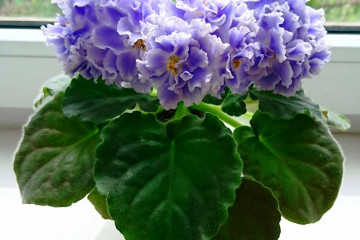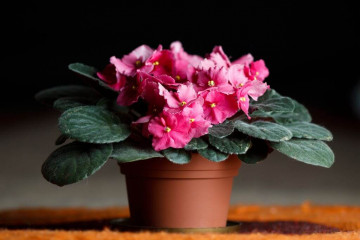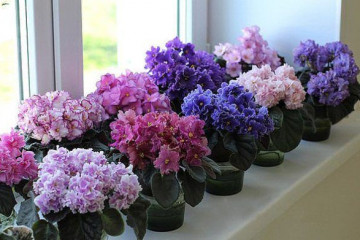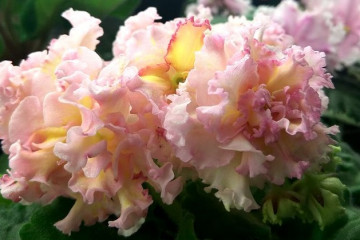Violet Magenta - description and characteristics of the variety
Content:
Houseplants are very popular, especially violets. Small matte blossoms, soft-touch leaves and easy care - these plants quickly became favorites in the gardening world. One of the most popular varieties of the mentioned flower is the Magenta violet, bred by the Ukrainian breeder Elena Lebetskaya from the city of Vinnitsa.
What a violet Magenta looks like
The name of the described plant consists of two parts:
- magenta, which is associated with the battle in Italy in 1859;
- le is a mandatory prefix characterizing the breeder, in this case Elena Lebetskaya.
Violet Le Magenta appeared ten years ago.
Belongs to the genus Saintpaulia (saintpaulia) - these are flowering herbaceous plants of the Gesneriaceae family.
The bush grows in the form of a rosette, which is made up of leaves. Leaves growing on thick petioles of great length are distinguished by high density and soft roughness. Leaf plates are presented in a rounded-oval and pointed shape.
The size of the leaf rosette is fifteen centimeters.
Flowers germinate in the form of a double or semi-double basket. A deep red, even burgundy hue adorns the green rosette.
Features of caring for a violet Le Magenta at home
In order for the flower to please the owners with lush inflorescences, bright colors and constant growth, appropriate care is necessary. In this regard, Saintpaulia Magenta has certain features.
Temperature
The optimal temperature regime lies in the frames of + 18-25 degrees Celsius. At a low temperature, plant decay is observed, an increased temperature leads to the formation of aphids.
To avoid problems in winter, it is recommended to substitute a 3-cm layer of insulation under the pot on the northern windowsill (the simplest option is foam).
We must not forget about ventilation: fresh air is the key to successful germination.
Lighting
Here the situation is as follows: bright light is needed, but direct sunlight is prohibited. Aggressive exposure to the sun leads to leaf burns, so you should resort to diffused lighting.
While the winter period of time, the flowerpot feels calm on the south side.
However, with the onset of heat, it is better to transfer the Le Magenta violet to the east or west windowsill.
Top dressing
It is recommended to feed the plant with useful substances twice a month. While the violet has a rest period (November-February), the amount of dressings should be reduced to once every 40-50 days.
Fertilizers are applied to a pre-moistened soil (always after watering). Complexes of minerals are used in their capacity.
Watering, spraying and moisture
The moisture level in the air should be 55-65%. Lack of moisture can be solved in two ways:
- spraying the space around the pot;
- humidifier.
The water should be at room temperature - within 22-24 degrees.
There are three ways to water:
- Lower. A deep vessel is needed here. Pour the taken container with water and place the pot with the violet at ¾ of the height. Darkening of the upper layer indicates moisture saturation of the soil.
- Drip. A syringe or a watering can with a narrow nose is used. The soil is watered without touching the growth point and leaves.
- Wick. One end of a piece of natural fiber rope goes through a drainage hole in the pot, the other goes into a container of water. So, the roots will take only the amount of liquid that is necessary for growth.
Watering is an important part of care. The procedure is carried out as the soil dries. The main thing is to make sure that the soil is not flooded or dry through and through.
Priming
Violet Magenta grows well in special purchased soil or in a homemade substrate. In order to "prepare" a suitable soil, it is necessary to mix four ingredients in equal proportions:
- peat;
- shredded sphagnum moss;
- leafy soil;
- humus.
The resulting mixture is thoroughly mixed through a strainer.
This removes small debris, the remnants of some roots and the formed lumps break. The resulting combination is friable and soft, with no foreign elements or unwanted organic residues.
When and how it blooms
Violet begins to delight with a beautiful color in spring, namely in March. At the start, the plant blooms with long stalks. At the ends of these legs, there are three to five baskets of inflorescences.
From the released baskets, flowers of a bright red hue, pleasant to the touch, grow later. The diameter of double or semi-double flowers is 50 mm. The floral edges are beautifully framed with white edging.
How Saintpaulia Cuff reproduces
The described plant reproduces in two ways: by seeds and vegetatively.
The second method is more commonly used at home. This method involves dividing the bush into two or three parts or cutting off the leaves, followed by rooting.
The technology of vegetative propagation by dividing the bush is carried out in several stages:
- The bush is carefully removed from the pot.
- Gardeners separate the "baby" with a sharpened knife.
- The separated particle is placed in a small pot (no more than 6 cm in diameter).
- The pot is covered with a glass container or lid, forming a greenhouse.
- Daily airing and watering with small portions of water is carried out.
The mother bush must be cleaned of dried parts and transplanted into a new vessel.
Transplant after purchase and during reproduction
Gardening professionals recommend replanting the violet to a new "place of residence" immediately after purchase. The best time to transplant is before the summer heat. This period is due to two reasons:
- The plant came out of "sleep" when any manipulations are strictly prohibited.
- There is still plenty of time before flowering.
- Possible quick adaptation to a new location.
The transplant is carried out step by step:
- A three-centimeter expanded clay layer is laid on the bottom of the container.
- Prepared soil is poured over it. The pot is filled by a third.
- In the center is the future bush.
- The voids are filled with soil.
After transplanting, be sure to water the flowerpot. And then - to transfer to the usual mode of care.
Possible growing problems
With improper care and in the wrong conditions, the violet simply rots. If the plant does not have enough light, there is a deficiency in minerals - the leaves turn yellow.
Also, the foliage is covered with specks due to merciless pests:
- aphid;
- nematode;
- thrips;
- whitefly.
The best efficiency in the fight against them is shown by specially developed chemical preparations - insecticides.
Violet Le Magenta is affected by a number of diseases:
- Fusarium - rotten spots on the leaves and stem. The appearance is associated with a sharp decrease in temperature (especially often observed in winter).
- Floury rum - white spots. It starts from high humidity. To prevent this, you should do prevention - spray the plant with a solution of potassium permanganate every thirty days.
Also, the violet suffers from late blight, leaf rot and the formation of gray rot. In order to prevent such consequences, you need to properly approach the care of Saintpaulia, periodically spray it with fungicidal preparations.
The description of the investigated flower shows that this violet is quite beautiful and requires proper attention. However, growers who already have experience in breeding Saintpaulias are unlikely to see any difficulties. However, even beginner plant lovers will be able to provide proper care if they adhere to the above rules.
